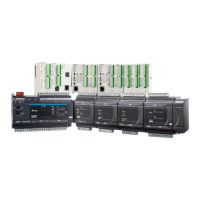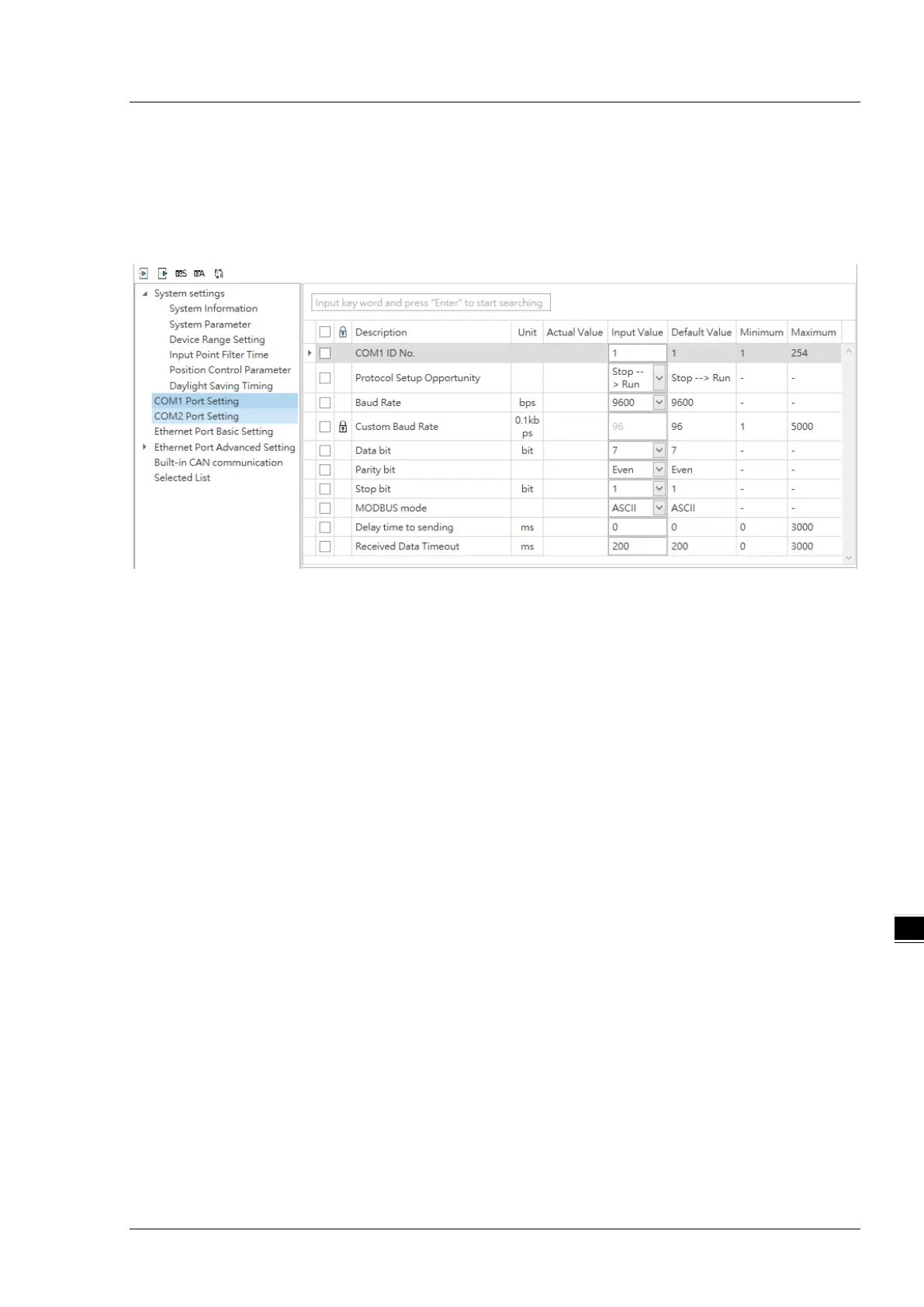Chapter 8 Hardware Configuration
8.4.2.2 COM1 & COM2 Port Settings
The DVP-ES3/EX3/SV3/SX3 Series CPU module come with one or two communication ports, depending on the
models. The setting items for COM1 and COM2 are the same; you can set the parameters for COM1 and COM2 ports
respectively.
Set a station address. You can identify a device on a network by the station address. The station address cannot be
the same as the station address for another device on the same network. If the communication port functions as a
slave, and there are other slaves, the station address of the communication port cannot be 0. Station address 0
broadcasts to all slaves in a communication protocol. If a master specifies in a data packet that data must be sent to
station address 0, the data is sent to all slaves. No matter what the station address of these slaves are, these slaves
receive the data packet addressed to station address 0.
Set when the communication port runs. Select Stop --> Run, and communication works when the CPU module
switches from Stop to Run. If you instead select Power-on, the communication starts working when you Power-on the
module.
Select a communication speed in the Baud Rate list or select Custom Baud Rate and enter a new rate.
Set the communication parameters, Data bit, Parity bit, Stop bit, and Modbus mode for the port.
Set the Delay time to sending when the DVP-ES3/EX3/SV3/SX3 CPU module receives communication and how
long it waits before responding to the remote modules.
Received Data Timeout applies when the DVP-ES3/EX3/SV3/SX3 Series CPU module acts as a server to send
out communications. The timeout is how long the module waits before the received data times out.

